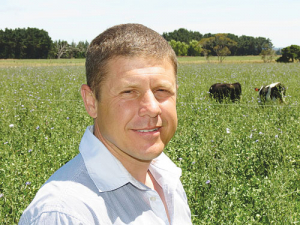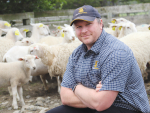Hogget breeding, done correctly, can increase the number of lambs weaned on a farm each year and their lifetime performance.
Massey University’s professor Paul Kenyon says successful hogget mating depends on following a few rules in February-May.
“With the good summer we have had, many farmers may be considering breeding hoggets for the first time. Failure to follow simple rules can result in disappointing performance in this year and following years for the young ewe.”
Kenyon says hoggets need to weigh at least 40kg, but more accurately weigh a minimum of 65 - 70 % of their subsequent mature weight. From these figures a farmer can figure the ideal minimum weight for hoggets at breeding.
“Farmers need to monitor the live weights of their hoggets through to breeding and adjusting their feeding levels to ensure these minimums are met,” Kenyon says.
“The minimum live weights are individual hogget minimums and not a flock average. If some hoggets within the mob do not achieve the minimum they should not be bred but instead managed throughout winter-spring as traditional non-bred hoggets.
“Hoggets too light at breeding are less likely to wean a lamb and are more likely to display poor two-tooth performance and less likely to last in the flock.”
An alternative or extra tool to select hoggets suitable for breeding is body condition score (BCS).
“Hoggets should have a minimum BCS 2.5 at breeding. Having this extra condition will increase their chance of becoming pregnant and help them buffer the demands of pregnancy and lactation.”
He says exposing hoggets to vasectomised rams (teasers) can increase the proportion of hoggets bred and those bred early in the breeding period.
“Teasers should be introduced 17 days prior to the first day of breeding. Ideally teaser-to-hogget ratios should be about 1:70 although responses can still occur at rates of 1:200.
“Teasers should not to be used as a short-term fix to ensure lightweight hoggets are cycling at breeding. Teasing lightweight hoggets may help them get pregnant but farmers are just setting up these hoggets to fail.”
Kenyon says hoggets are shy breeders, so farmers need to ensure they have enough ‘ram power.’
“An ideal ram-to-hogget ratio is 1:50. So well before breeding farmers need to consider how they will have enough rams and which rams are the most appropriate. When choosing a ram, farmers need to consider the potential impact on birth weight.”
He advises avoiding rams from breeds likely to produce large heavy lambs at birth, or those with big shoulders, due to the risk of birthing difficulties.
“It’s important when preparing hoggets for breeding to ensure they are vaccinated against abortive diseases. Also, any factor that limits growth such as parasite burdens or mineral deficiencies can have a significant negative impact.
“Farmers should consult their local vet about an appropriate health management plan.”
Singletons vs twins
The Sheep Research Centre at Massey, with funding from Beef + Lamb NZ, has two long-term hoggets studies underway.
The centre is looking at the possible effects of selecting singletons and twins born to hoggets as replacement ewes, versus those born to mature ewes.
It is also looking into the possible long-term consequences of very heavy hogget breeding weights on lifetime productivity and efficiency.



















